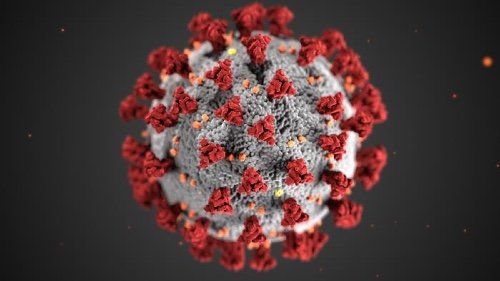Protecting the Radiologist: One Health System’s Efforts
UVA Health implements scheduling, reading room, and social distancing protocols to keep radiologists safe.

Reading Room COVID-19 Signage Courtesy: UVA Health

Coverage of COVID-19 continues to focus on patient screenings, decontaminating equipment, and controlling the spread of the virus.
And, amid all these concerns, radiologists are being tasked with reading CT scans of patients with respiratory symptoms whenever those images are deemed appropriate and helpful. It’s a situation that poses a lot of risks.
To keep radiologists as safe as possible and contribute to limiting infections, UVA Health has set a plan in motion, incorporating staggered work schedules, home-reading, and social distancing.
Arun Krishnaraj, M.D., MPH, UVA Health’s vice chair of quality and safety and abdominal imaging section chief, shared the details with Diagnostic Imaging.
Staggered Scheduling
Starting this week, Krishnaraj said, UVA’s radiology department will divide its faculty into two groups that will work weekly shifts from home and from the hospital. This scheduling design will also include two radiologists who will serve as floaters, stepping in as needed if someone were to become ill or quarantined, as well as providing call and overnight procedure coverage.
Ordinarily, maintaining this type of coverage would be difficult, but recent travel bans and canceled conferences are working in favor of strengthening UVA’s ability to provide comprehensive coverage, he said.
“There’s no one at a conference, on academic time, or on vacation. So, to have my full complement of eight abdominal and six thoracic radiologists available for body imaging is a luxury in terms of scheduling,” he said. “This will allow us some flexibility as the situation continues to change.”
Reading Images
The approach to timely – and safe – reading is multi-faceted, he explained, with the reading room being the first concern.
“Reading rooms are, effectively, a Petri dish for cross-contamination,” he said.
To limit any potential virus transmission between providers, UVA Health has divided its body reading room into two quadrants. On each side, one attending is assigned to work with trainees without any crossover.
The department is also placing limitations on workstations. Providers are being asked to select – and stick with – a workstation for their entire week shift. The stations are being hardcoded for the attending provider.
“When you pick a workstation, that is your workstation for the week, and no one else gets it,” he explained. “We are also requiring that each radiologist wipe down his or her workstation with a disinfecting wipe daily.”
Fortunately, he said, every faculty member already has a home workstation, so everyone is equipped to continue working during their at-home shift. For those weeks, attending providers will read out residents via phone using screen-sharing technology.
Accommodations will have to be made for various larger exams, however. Currently UVA Health’s VPN connection is capped at 30 megabytes per second, meaning it may be difficult for providers to review certain large file-sized exams, such as ultrasound or MR enterography. To side-step this problem, those cases will be reserved for radiologists reading in-hospital.
Social Distancing
Despite the virus, however, aspects of medical care and medical education must continue, Krishnaraj said. UVA Health has found ways to keep those wheels turning as much as possible while abiding by guidance from the Centers for Disease Control & Prevention (CDC) for individuals to stay at least six feet apart.
Until further notice, lectures have been postponed, and daily procedure huddles now occur in the department’s auditorium. This gives providers the chance to review procedure cases for the day without getting too close.
Steps have also been taken to strictly limit access from anyone outside of radiology to the reading room, he said. Whenever possible, consultations are being conducted over the phone, and if they must be done in person, only the attending provider is allowed in.
“We understand that this may potentially have impact on education, but we’re doing this to try to minimize not just our exposure, but contamination of our room and its high-touch surfaces. Our room has a lot of traffic – people coming in, people going out. Moreover, not limiting access violates the concept of social distancing.”
To help control access to the reading room, the department has posted signage on the door. The sign alerts anyone approaching to contact radiologists via phone for a consultation, and it provides an in-hospital number for easy contact.
Ultimately, Krishnaraj said, these steps are all designed as protective measures as the health system prepares for a more significant potential impact from those patients touched by the virus.
“We hope that these types of drastic approaches will allow us to weather the possible threat of illness to our faculty, trainees, staff, and our patients during the outbreak,” he said.
New MRI Research Explores Links Between Waist-to-Hip Ratio and Memory in Aging
March 13th 2025Researchers found that a higher waist-to-hip ratio in midlife was associated with higher mean diffusivity in 26 percent of total white matter tracts in the cingulum as well as the superior and inferior longitudinal fasciculus.
Can Ultrasound-Based Radiomics Enhance Differentiation of HER2 Breast Cancer?
March 11th 2025Multicenter research revealed that a combined model of clinical factors and ultrasound-based radiomics exhibited greater than a 23 percent higher per patient-level accuracy rate for identifying HER2 breast cancer than a clinical model.